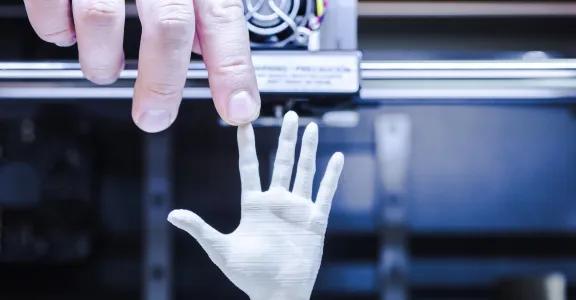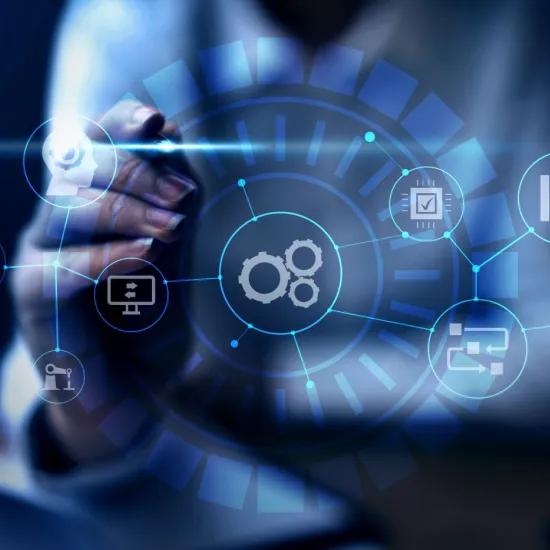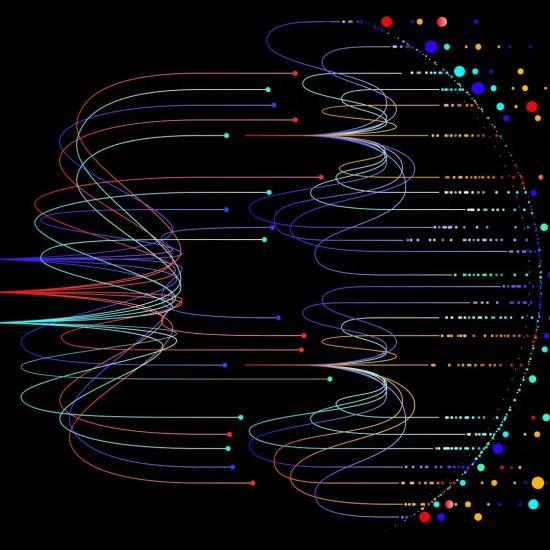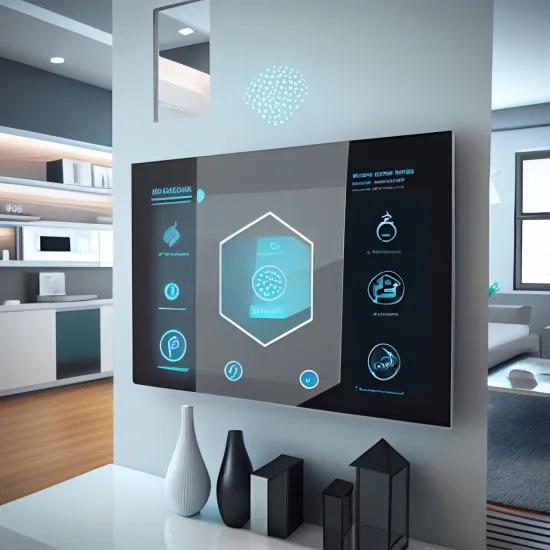Adaptive manufacturing reduces costs associated with errors
The higher the cost of a product, the more crucial it is for it to be flawless. Since 3D printing is an expensive process, achieving near-perfect results is essential. To address this, the ARIAC project, part of Walloon TRAIL, has developed a method that simulates the human eye layer by layer to detect issues early on.
Zero defects, zero accidents, and no unnecessary material waste, that is the dreamed production process for engineers and manufacturers. At ARIAC, this vision becomes a reality by incorporating AI into 3D printing, explains Marouene Oueslati, project leader at Sirris: ‘The camera integrated into the printer is activated to inspect the process through a continuously trained algorithm, much like a human would. This means that an operator doesn't need to constantly monitor the production process.’
How do you replicate human vision?
A human is always looking, with their eyes constantly darting from left to right, scanning the world around them. ‘We create 'vision' in the exact same way using the 3D printer's camera’, Marouene explains. ‘Layer by layer, the production process is monitored. Every 30 seconds, the camera captures an image, which is then evaluated by an AI algorithm. Is there a defect? Is something going wrong? If so, the operator is immediately notified via email, WhatsApp, or text message. We call this 'smart manufacturing' or 'adaptive manufacturing,' where data plays a crucial role.’
To function effectively, the AI algorithm was trained on a database of 500,000 images. From this, it learned to distinguish between errors and successful prints, allowing it to compare real-time printing with the expected outcome. ‘That’s where the main achievement lies’, says Marouene: 'All those images were manually labelled as 'right' or 'wrong' by experts. In one second, it makes a judgment, after which the operator has 29 seconds to verify that something is indeed going on.'
It may happen that the algorithm misjudges a print layer, and incorrectly reports it as faulty. ‘In that case, we label the image captured by the camera. Once we have 20 similar images, we feed them back to the algorithm so that it improves over time. It is a process of constant learning. And if we notice a certain kind of defect that is not recognised, our expert will suggest creating a separate class for it in our algorithm and integrating it into our model.’
‘ARIAC is a perfect example of Sirris' strength’, adds Business Unit Manager Johan De Geyter. ‘We translate cutting-edge knowledge, in this case, AI-based error detection, into a useful application for our target industry. In the first phase, Sirris focuses on optimising existing processes, the human error detection. In the next phase, we typically introduce new and innovative techniques to eliminate the costly or complex aspects of a production process. In this case, the expert classification of errors is the most time-consuming and expensive part of training an AI algorithm. However, new techniques, such as Generative AI, could enable the creation of 'synthetic data’ - computer-generated training data - at a fraction of the cost and with significantly less expert involvement.’
Building blocks for industry
The industry is already eagerly anticipating ARIAC's developments. ‘That's how we operate at Sirris’, says Marouene. ‘We are an innovation centre. We identify the challenges companies face and develop new, innovative approaches to address them. Our goal is not to work exclusively for one company; instead, we guide them to develop their own solutions using our foundational building blocks. This helps them avoid mistakes and ultimately save costs.’
Real-world use cases are also starting to be launched. ‘For example, Liege-based companies V2i and Euresys are working on a project based on our developments’, Marouene explains. ‘AnyShape is also exploring how they can apply these innovations.’
Meanwhile, ARIAC has extended its developed techniques to injection moulding. ‘In that context, we may not be capturing images, but we are processing tabular data to assess the quality of the work. We are currently in discussions with two companies about implementing these methods, but it’s still too early to provide details’, Marouene adds.
From innovation to product
The goal is to take ARIAC's developments a step further. ‘SIRRIS, which supports our project, has both a research business model and consultancy business model, and we would like to switch from one to the other’, Marouene explains. ‘We want to turn our innovation into a tangible product, a real R&D project that allows us to launch B2B initiatives with companies interested in our developments.’
‘ARIAC is the largest AI implementation project in Wallonia’, Marouene concludes. ‘We are committed to making it a success and ensuring that the building blocks we create are appealing to the market.’ And Johan concludes: ‘ARIAC is a perfect example of what Sirris excels at. We introduce innovative technologies into existing business processes. Emerging technologies like GenAI offer new opportunities, and Sirris is poised to play a leading role in applying these advancements to industrial companies throughout Belgium.’
Marouene expands on this: ‘After this project, we want to investigate whether there is a way to generate images with the defects we want to show in a print layer, to further train the algorithm on that. Because we have to be careful about the imbalance that sometimes occurs in an image database. You need images not only of what is right, but also of what is wrong. So, sometimes we deliberately print errors, to make sure we have enough images of defects too, and it would be useful if we could generate those images without printing.’




